Higher classification Silverberry | Rank Species | |
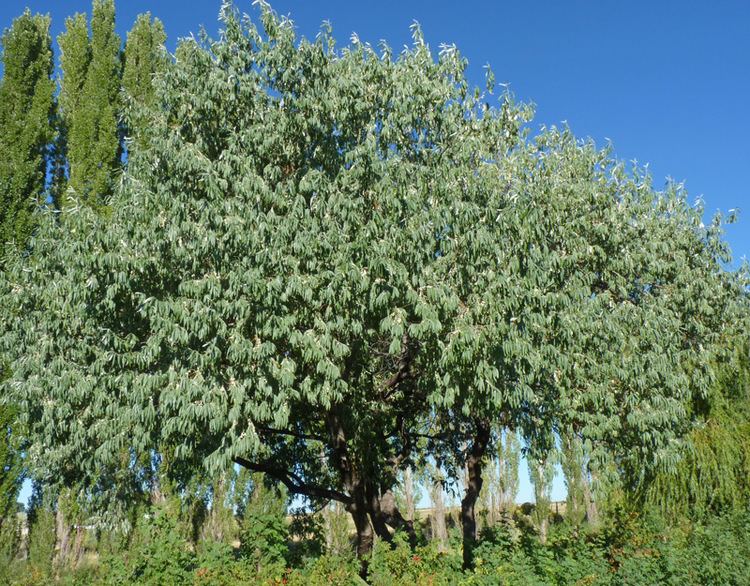 | ||
Similar Silverberry, Elaeagnaceae, Sumac, Tamarisk, Elaeagnus umbellata | ||
Octonary ingredients of elaeagnus angustifolia formuls pankaj oudhia s medicinal plant database
Elaeagnus angustifolia, commonly called Russian olive, silver berry, oleaster, Persian olive, or wild olive, or commonly referred to as senjid or sinjid in Afghanistan and senjed in Iran, is a species of Elaeagnus, native to western and central Asia, Afghanistan, from southern Russia and Kazakhstan to Turkey and Iran. It is now also widely established in North America as an introduced species.
Contents
- Octonary ingredients of elaeagnus angustifolia formuls pankaj oudhia s medicinal plant database
- Name
- Description
- Cultivation and invasive behavior
- Uses
- Propagation
- References
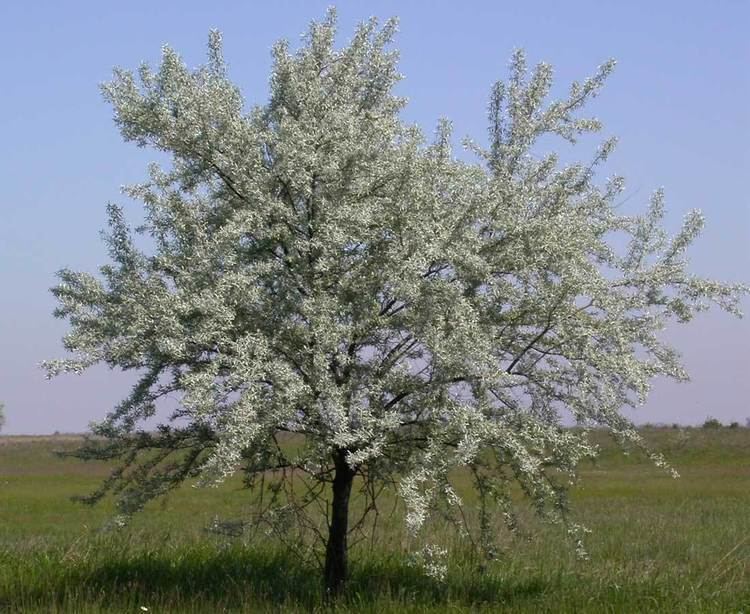
Name
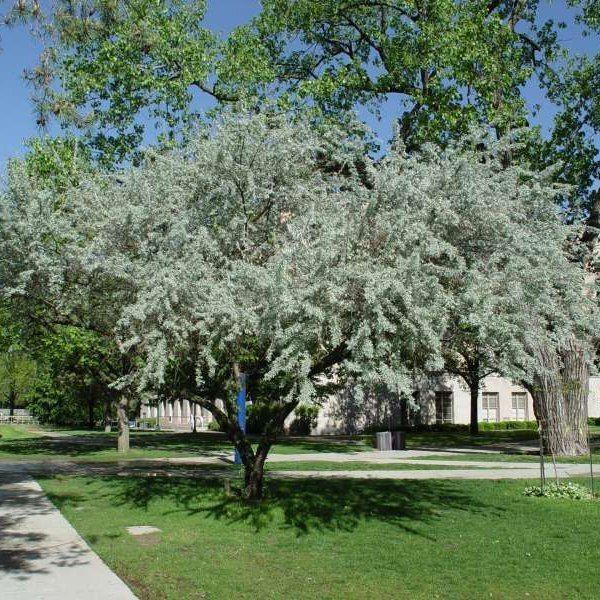
Its common name comes from its similarity in appearance to the olive (Olea europaea), in a different botanical family, Oleaceae.
Description
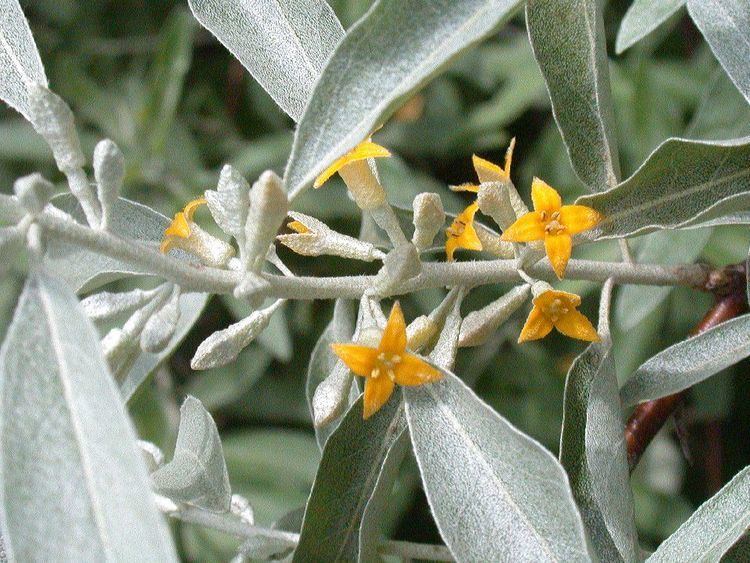
Elaeagnus angustifolia is a usually thorny shrub or small tree growing to 5–7 metres (16–23 ft) in height. Its stems, buds, and leaves have a dense covering of silvery to rusty scales. The leaves are alternate, lanceolate, 4–9 cm (1 1⁄2–3 1⁄2 in) long and 1–2.5 cm (3⁄8–1 in) broad, with a smooth margin. The highly aromatic flowers, produced in clusters of one to three, and are 1 cm long with a four-lobed creamy yellow calyx; they appear in early summer and are followed by clusters of fruit, a small cherry-like drupe 1.0–1.7 cm (13⁄32–21⁄32 in) long, orange-red covered in silvery scales. The fruits are edible and sweet, though with a dryish, mealy texture.
The shrub can fix nitrogen in its roots, enabling it to grow on bare mineral substrates.
Cultivation and invasive behavior

Elaeagnus angustifolia was described as Zizyphus cappadocica by John Gerard, and was grown by John Parkinson by 1633, and was also grown in Germany in 1736. It is now widely grown across southern and central Europe as a drought-resistant ornamental plant for its scented flowers, edible fruit, attractive yellow foliage, and black bark.
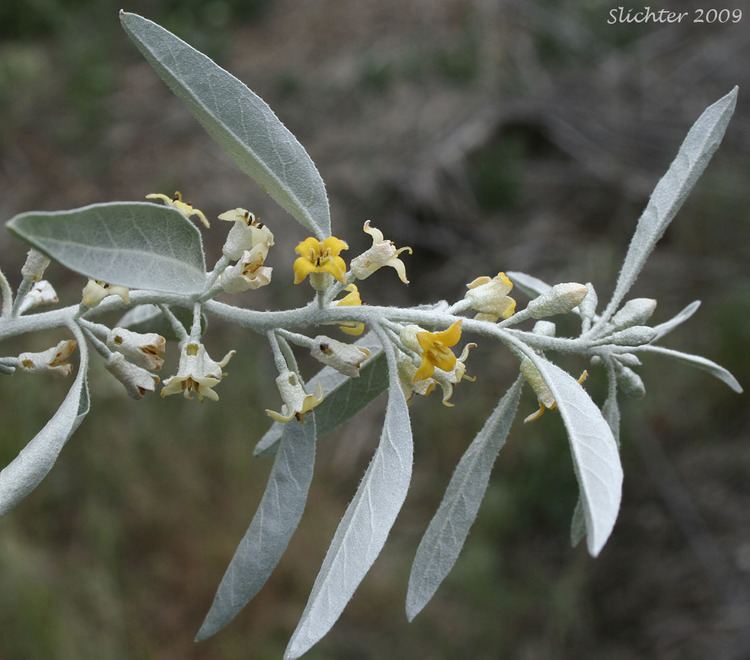
The species was introduced into North America in the late 19th century, and subsequently escaped cultivation, because its fruits, which seldom ripen in England, are relished by birds which disperse the seeds. Russian olive is considered to be an invasive species in many places in the United States because it thrives on poor soil, has low seedling mortality rates, matures in a few years, and outcompetes wild native vegetation. It often invades riparian habitats where overstory cottonwoods have died.
Uses
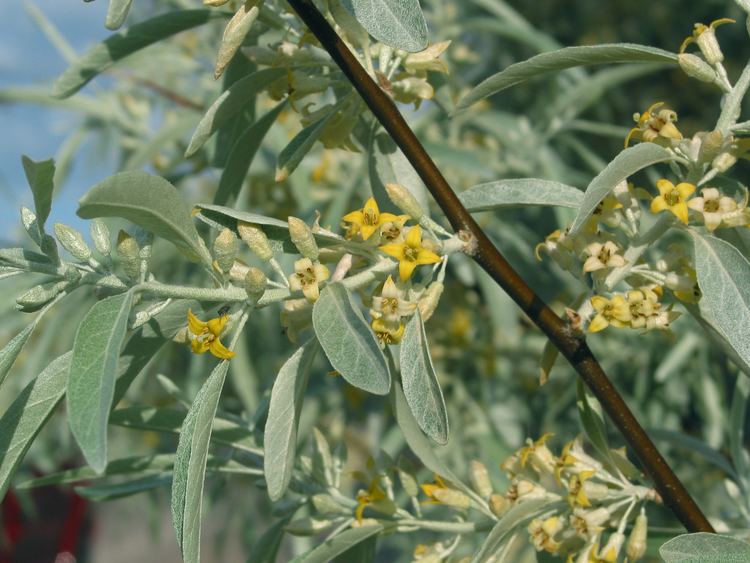
In Iran, the dried powder of the fruit is used mixed with milk for rheumatoid arthritis and joint pains. It is also one of the seven items which are used in Haft Sin or the seven 'S's which is a traditional table setting of Nowruz, the traditional Persian spring celebration.
Propagation
Establishment and reproduction of E. angustifolia is primarily by seed, although some spread by vegetative propagation also occurs. The fruit is readily eaten and disseminated by many species of birds. The plants begin to flower and fruit from three years old.
